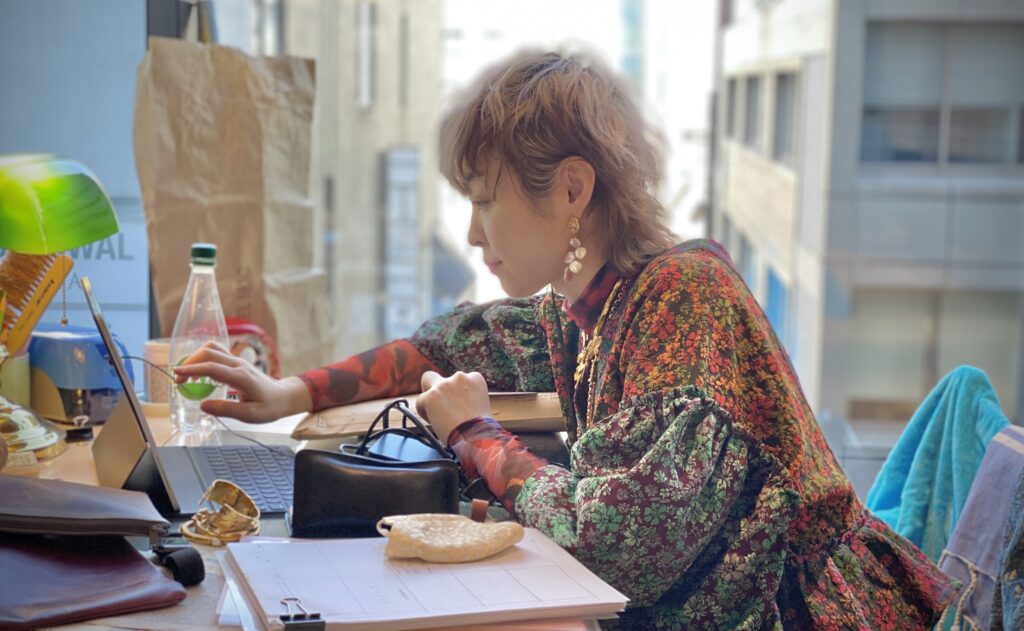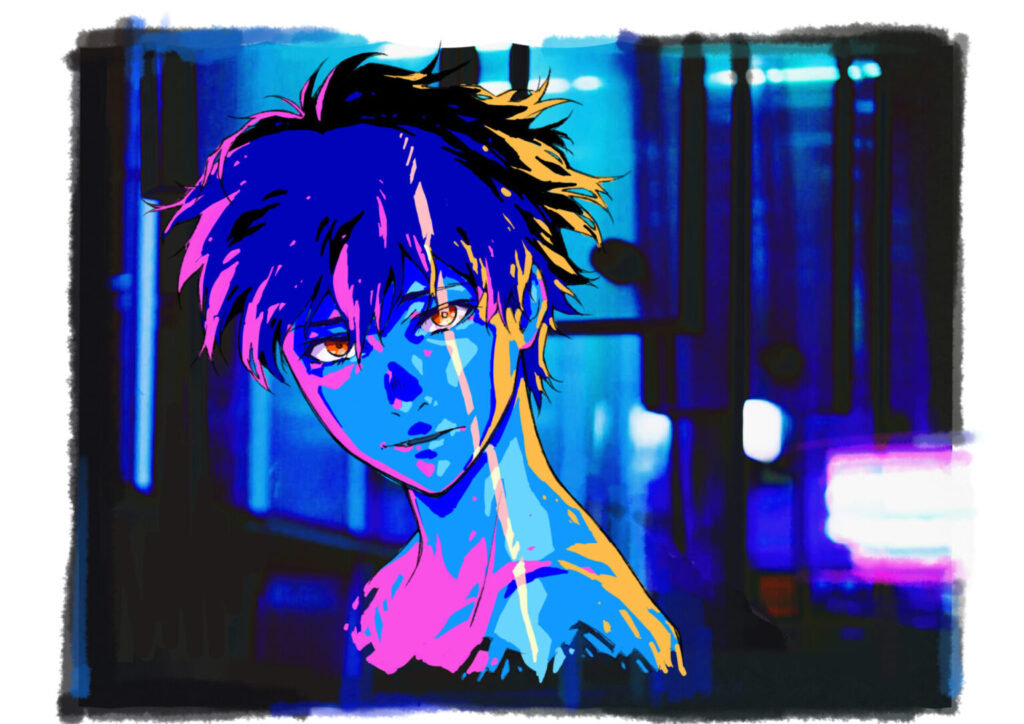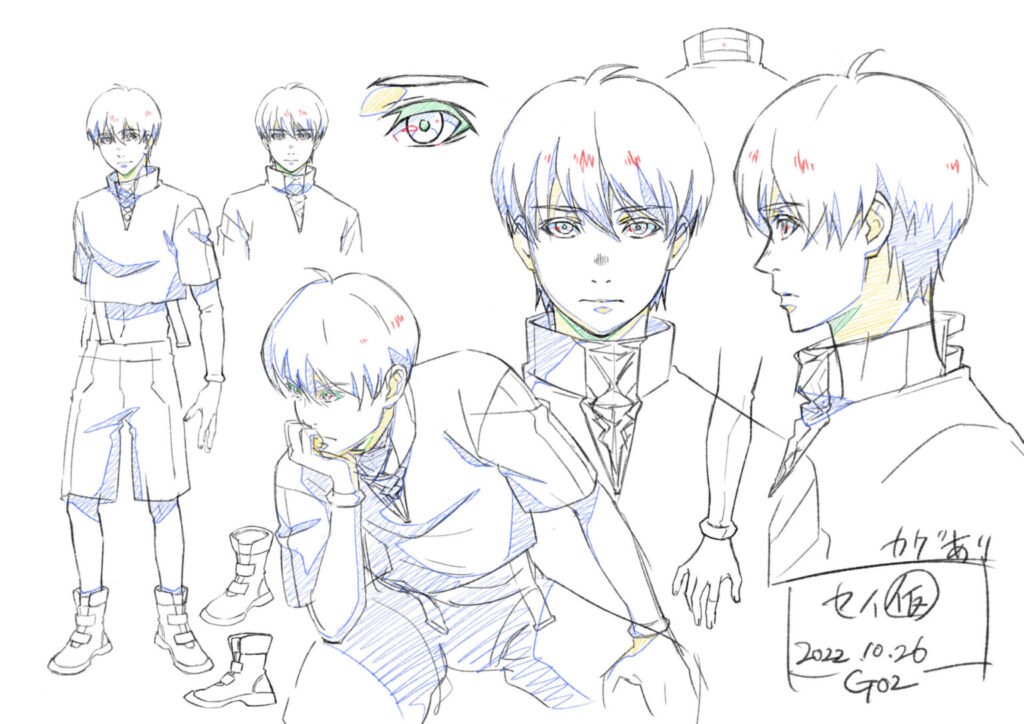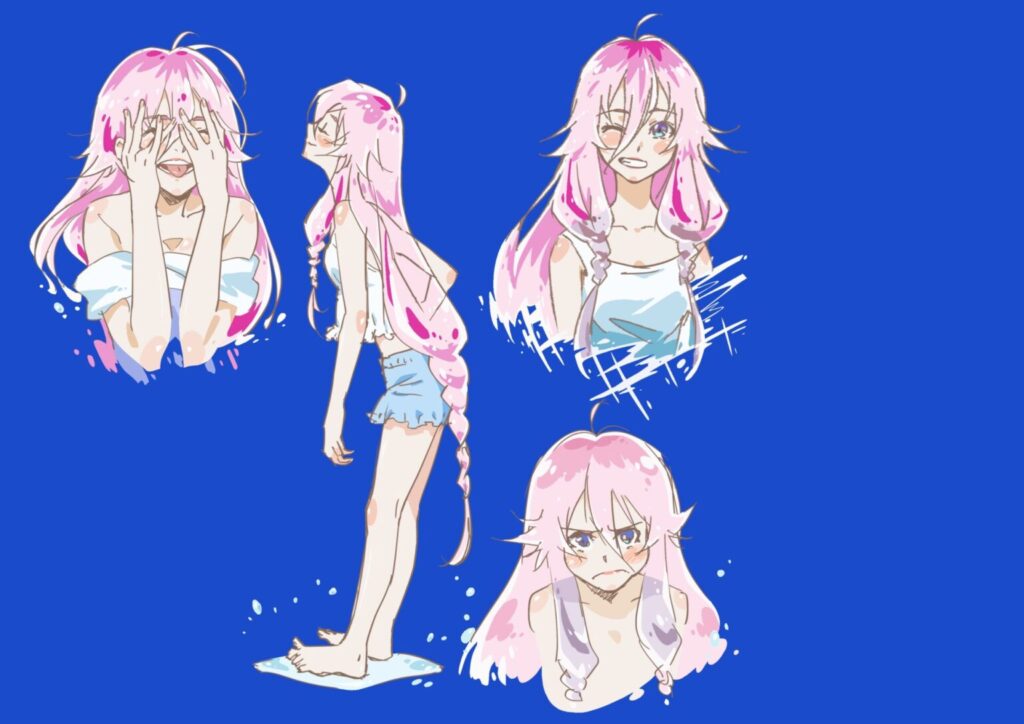
- ARAB NEWS
- 11 Jul 2025

Haruna Gozu, also known as GOZ, is an international Japanese animation director and animator who worked on many major animation projects such as Demon Slayer: Kimetsu no Yaiba, Fairy Tail, City Hunter: Shinjuku Private Eyes (2019), Detective Conan: The Fist of Blue Sapphire, and more.
GOZ shared exclusively with Arab News Japan about her inspiration for animation: “I have been interested in art, interior design, and animation since I was a child. Of course, I love Ghibli movies. One summer day when I was a child, I watched Ghibli’s Pom Poko and Disney’s The Lion King at the movie theater with my mother. I was so inspired by them that I decided to become an animator.”
“There are a few things I like about Japanese culture. Ukiyoe, calligraphy, tea ceremony, etc. Ukiyo-e can be said to be the root of animation. The overlap of craftsmanship is common to all of them. The calligraphy is a form of the nuances of the delicate lines of the beautiful brushstrokes, and the same beauty can be found in the nuances of the pencil. Tea gently soothes the weary body and mind,” she said.

About the establishment and challenges of her career in the animation industry, GOZ said, “I have been working as an animator since 2011. Animation has the power to capture the hearts and minds of many people and the power to connect people across countries, cultures, and languages. Since I was a child, I have always had the word ‘connect’ in my mind and in my heart. I chose to work in animation to play a role in connecting people, cultures, and concepts.”
“I started out with basic work and gradually got involved in a variety of different productions. I wanted to observe different types of works, studios, and people, not just one project. That is how I learned techniques and gained experience. I wanted to be involved in works such as One Piece and Naruto, which are well-known to westerners, as much as possible.”
“I work freelance, so I have to choose my own work and manage my own finances. But it is also a test to develop my negotiating and thinking skills as a creator. I try to have a strong will and pride as a creator. That is why I have not experienced much trouble even in Japan, where wages for animation are low. You have to have the strength to break through anything,” she added.

One of GOZ’s teachers in animation was the legendary Japanese animator and director Ichiro Itano. She shared his experience with him, saying, “He was a 3D advisor for a company called Graphinica at the time. I joined that company as an outsourced 2D animator. He was giving a course to teach 3D and 2D animation, so I joined it. My first impression of him was that he was a ‘hermit,’ with strong eyes, long hair tied back, and a lot of experience and dependability.
“He is a man of great passion, love, and abundance. He was kind and strict with us. He once bought hot sandwiches, which he brought to us in a hurry on his motorcycle. Some days, he took us to the science museum or planetarium to learn. Some days he showed us Ultraman or some movie. He and I are both passionate types, so we had our fights. Of course, I was immature, but he was passionate about teaching me. The most important thing I learned from him was that its boring to lose the ability to think, like something flowing on a conveyor belt or a machine. The most important things are about emotions, bringing characters to life, and being creative as an animator.”
About the differences in animation style and working conditions between Japan and western countries, GOZ said, “Japan values traditional things in all industries. We are slow to take on new challenges. I think this is both a problem and a good thing about Japanese culture. Therefore, the animation industry is also slow to take on new initiatives, and it is taking a long time to go digital,” she said.
“Many people draw analogies on paper. Japanese people are craftsmen, serious, and patient. Many people work on paper and have the ability to tolerate ambiguity and help each other. Many are not good at asserting themselves. Do you also feel that working by hand on paper makes for powerful work? There is powerful analog energy, just as there is a difference in the energy you receive from an email sent on a computer and a handwritten letter. In the west, I think it is more important to be an artist and to have ‘individuality’. It has been a longstanding problem that wages are very low in Japan compared to the west,” she added.

GOZ held her first solo exhibition in Fall 2021 under the concept ‘Decorating Animation’ in Ginza, Tokyo. “We also published NFT in the winter. This was an early effort for a Japanese animator,” she said. “The concept of the solo exhibition was ‘Decorating Animation’ and the theme of the painting was ‘Breathing’. Few people from the Japanese commercial animation world have taken the path of art. As a Japanese animator, I would like to enter the art, interior design, textile, and music industries. I’m now taking a new path as GOZ. The fundamental meaning of living creatures, and I have been working on the theme of ‘breathing’ as the simplest and deepest animation. I would like to make this theme my life work with its fundamental meaning.”
“By holding a solo exhibition, I have encountered and learned new things. I hope to learn about the possibilities, difficulties, and concerns of NFT and apply them to the animation industry. I also learned that viewers are good at thinking and creating by themselves, not only with given images. In a more global and digitalized future world, creators who have the ability to think and create on their own will survive,” she added.

GOZ went on transit trips through Middle Eastern countries such as the United Arab Emirates and Qatar. She is looking forward to visiting more countries, as she heard that many people in the region like Japanese anime. The Middle East is a very interesting region for her, and she wants to learn a lot from it.
Regarding her upcoming projects in the near future, GOZ said: “This is a new approach to adding value to processes. We want to add value to the paper and processes drawn by artisans that have been discarded in the past. We want to use blockchain and NFT to boost Japanese animation.”
About her recommendations for those who want to be animation artists or work on animation projects, GOZ said: “Animation is a very interesting job, but it requires patience and perseverance. Also, you have to cooperate with others. It’s important to communicate with other creators and production people. It’s important to keep going and not give up after a few mistakes, especially for those who aim at drawing and observe a lot of things. It’s necessary to have the ability to perceive things, to be sensitive, and to be flexible. It’s important to practice croquis with soft lines and to capture the beauty of nuance, shape, and balance of lines. I encourage everyone to dive into the world of animation. It’s a most wonderful experience.”